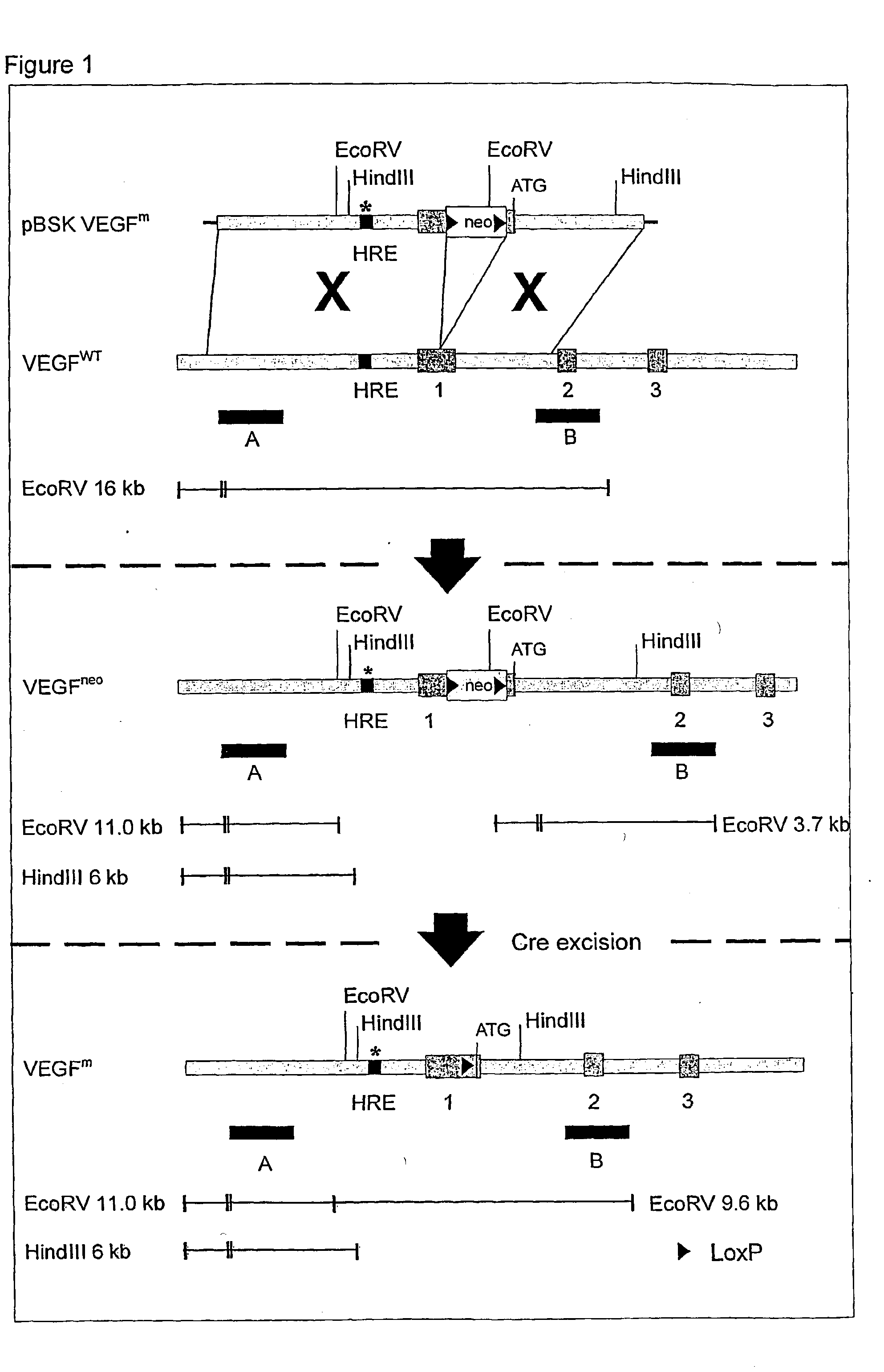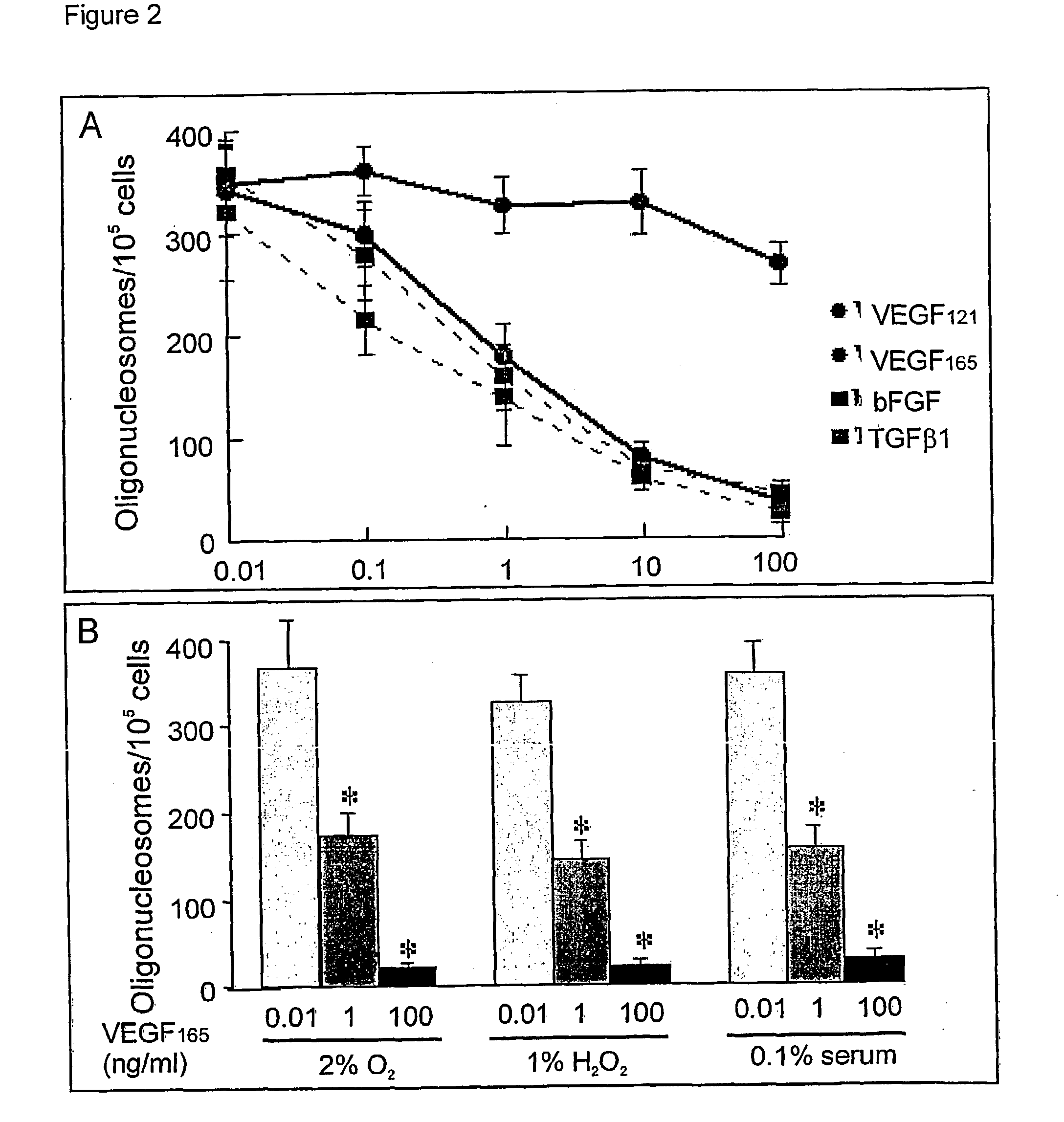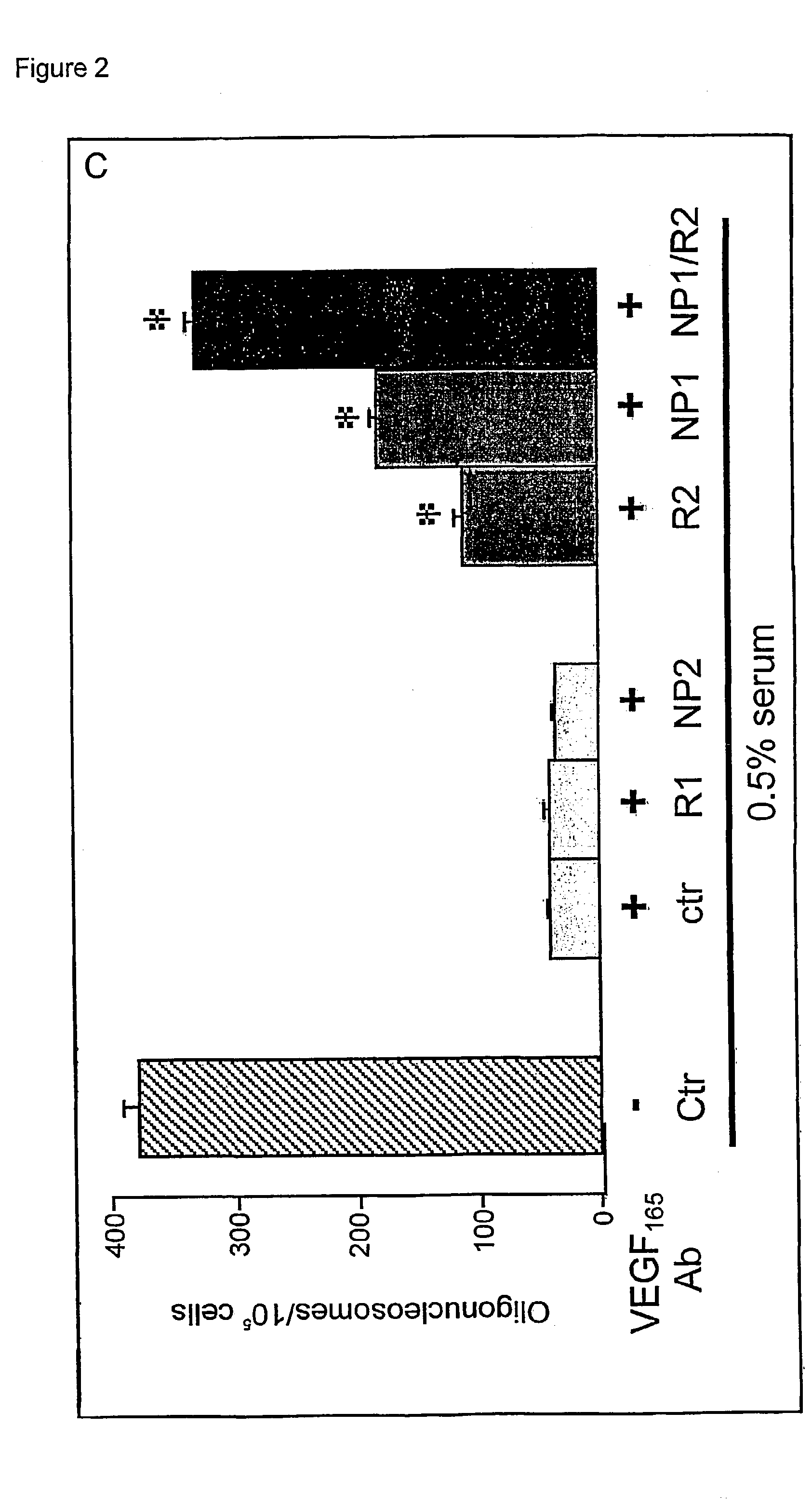Use of vegf and homologues to treat neuron disorders
a neuron disorder and vegf technology, applied in the field of neuron disorders using vegf and homologues, can solve the problem of in-vivo relevance of such a direct effect not being validated, and achieve the effect of impaired hypoxic upregulation
- Summary
- Abstract
- Description
- Claims
- Application Information
AI Technical Summary
Benefits of technology
Problems solved by technology
Method used
Image
Examples
Embodiment Construction
[0044] 1. Targeted Deletion of the HIF-Binding Site in the VEGF Promotor
[0045] Targeted deletion in the VEGF promotor of the hypoxia-response element (HRE), i.e. the binding site for the hypoxia-inducible factors (HIF) 23, was achieved using Cre / loxP-mediated targeting (FIG. 1), and confirmed by Southern blot analysis.
[0046] Impaired hypoxic induction of VEGF in embryonic stem cells, homozygous for the HRE-deletion (VEGF.sup.m / m), was confirmed by Northern blot analysis and by measurements of VEGF release during 36 h hypoxia (19.+-.5 .mu.g / ml after normoxia versus 45.+-.6 .mu.g / ml after hypoxia in VEGF.sup.+ / + cells, n=6, p<0.05; 11.+-.2 .mu.g / ml after normoxia versus 13.+-.3 .mu.g / ml after hypoxia in VEGF.sup.m / m cells, n=6; p=NS). Deletion of the HIF-binding site in the VEGF gene was as effective as deletion of the HIF-1.alpha. gene itself 28 in abolishing hypoxic upregulation of VEGF (13.+-.4 .mu.g / ml after normoxia versus 14.+-.2 .mu.g / ml after hypoxia in HIF-1.alpha..sup.- / - ce...
PUM
| Property | Measurement | Unit |
|---|---|---|
| stress | aaaaa | aaaaa |
| soluble | aaaaa | aaaaa |
| lumen size | aaaaa | aaaaa |
Abstract
Description
Claims
Application Information
 Login to View More
Login to View More - R&D
- Intellectual Property
- Life Sciences
- Materials
- Tech Scout
- Unparalleled Data Quality
- Higher Quality Content
- 60% Fewer Hallucinations
Browse by: Latest US Patents, China's latest patents, Technical Efficacy Thesaurus, Application Domain, Technology Topic, Popular Technical Reports.
© 2025 PatSnap. All rights reserved.Legal|Privacy policy|Modern Slavery Act Transparency Statement|Sitemap|About US| Contact US: help@patsnap.com



